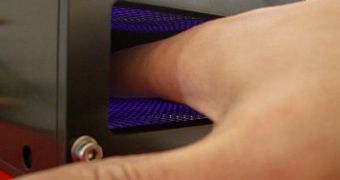German researchers at the Max Planck Institute for Extraterrestrial Physics (MPIEP) are currently in the process of developing plasma-based sanitizing technologies, which they say could bring the problem of hospital-acquired bacteria infections under control.
Plasma is a state of matter consisting of electrically charged, superheated gas, and its applications are extremely diverse. It is already in use today in physics experiments, but also in consumer goods.
Now, MPIEP investigators want to draw on research carried out on the International Space Station (ISS), and also on European Space Agency (ESA)-funded research to bring plasma technologies even closer to Earth.
Gregor Morfill, the director of the Max Planck Institute, is leading the efforts to develop the new sanitizing methods, which he says are essential to exterminating potentially lethal microorganisms.
“What we have with plasma is the possibility to supplement our own immune system,” the expert believes. ESA-funded physics experiments in this direction have been ongoing aboard the ISS for the past 10 years, he adds.
The “Plasmakristall Experiment Nefedov” was the first ever to be delivered on the ISS, followed in 2006 by the PK-3 and PK-4 experiments. “It’s the longest-running space experiment in the history of human spaceflight,” the German researcher says.
With help from the ESA Technology Transfer Program, Dr Morfill is seeking to move plasma technology to practical, everyday applications. Fighting antibiotics-resistant bacteria is essential, giving the high incidence infections with these organisms have displayed in recent years.
EU healthcare systems lose 380 million euros annually dealing with the effects of about 150,000 MRSA infections. Of these patients, about 37,000 die due to the effects of the bacteria. Multiple drug-resistant Staphylococcus aureus is a problem around the world.
Using cold-plasma technology, new hand sanitizers could far exceed the performances of ultraviolet radiation-based devices. The latter only clean the surfaces they shine on, whereas the former can also penetrate into corners and cracks.
Plasma could also be used to create a “planetary protection system,” that would clean and disinfect satellites and other spacecraft making their way into space. This could help prevent the transmission of Earth-based lifeforms on other celestial bodies in the solar system.
“It has many practical applications, from hand hygiene into food hygiene, disinfection of medical instruments, personal hygiene, even dentistry – this could be used in many, many fields,” Dr. Morfill adds.
“ESA has been tremendously helpful – we’re 90% funded by ESA. Funding for doing experimental work in the laboratory and in space has made it possible to spin off and start other research,” he concludes.

 14 DAY TRIAL //
14 DAY TRIAL //